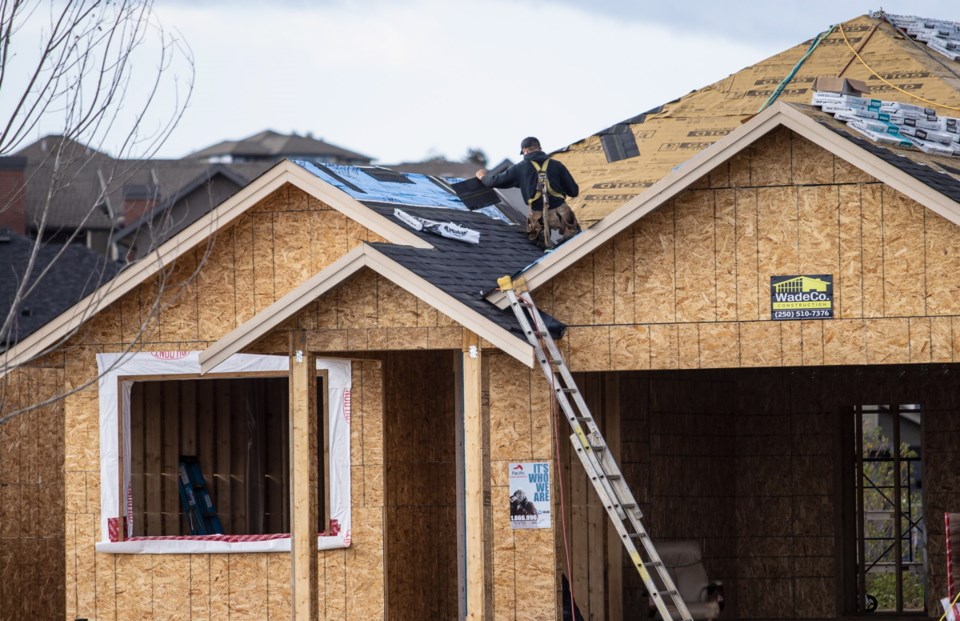The pace of homebuilding in Greater Victoria bucked a national trend in September as 509 new homes started coming out of the ground, according to data released Tuesday by Canada Mortgage and Housing Corporation.
While the pace of housing across the country slipped 2.5 per cent on a seasonally adjusted basis last month, Victoria counted 67 new single-family homes started and 442 multi-family units in September. That nearly doubled the number started in September 2018, when 263 new homes got underway.
However, Victoria Residential Builders Association executive director Casey Edge said the real story is hiding in the year-to-date figures.
Through the first nine months of this year, builders have started 2,569 new homes, down from the 3,028 started in the same period last year.
“The year-to-date gives a better indication of the health of the industry,” said Edge.
He claims the federally imposed mortgage stress test, the provincial speculation tax and municipalities hiking up development cost charges and dragging out approval processes have all combined to choke the pace of building at a time when all regions claim there is a lack of housing.
“They all throw up challenges to the housing market,” Edge said, noting the region is still dealing with low unemployment and a growing population that put increased demand on housing.
Edge agreed that a lack of skilled trades can contribute to the pace of construction, but he is adamant the real culprits are the hurdles put in place by government policy.
The slowdown of residential building in the country was not as extreme as some economists had predicted.
Many had expected an annual pace of 214,500 new units for September, but instead saw a trend of 223,507 last month.
“This continues to reflect strong demographic demand, both from international inflows and new households created within Canada,” said Robert Kavcic, a senior economist at the Bank of Montreal. “There’s a lot of homebuilding activity going on across the vast majority of Canada.”
The overall decrease in the rate of housing starts last month came as the pace of urban starts fell 2.4 per cent to 208,503 units.
Urban starts of apartment, condo and other types of multiple-unit housing projects dipped 0.2 per cent to 159,742, while starts of single-detached urban homes fell 9.2 per cent to 48,761 units.
Rural starts were estimated at a seasonally adjusted annual rate of 12,699 units.
The six-month moving average of the monthly seasonally adjusted annual rates of housing starts was 223,507 in September, up from 218,782 in August.
The CMHC’s monthly report follows industry figures that show home sales have been stronger than last year and stronger than the early months of 2019.
“Canada’s housing sector is back on the front foot with resales picking up as the year progresses and homebuilding activity clearly displaying some momentum,” Josh Nye, a senior economist at Royal Bank, said Tuesday.
“Ontario, the Prairies and Atlantic Canada are on the rebound while the trend in B.C. and Quebec remains strong despite slower starts in the last month or two.”
— with files from The Canadian Press



